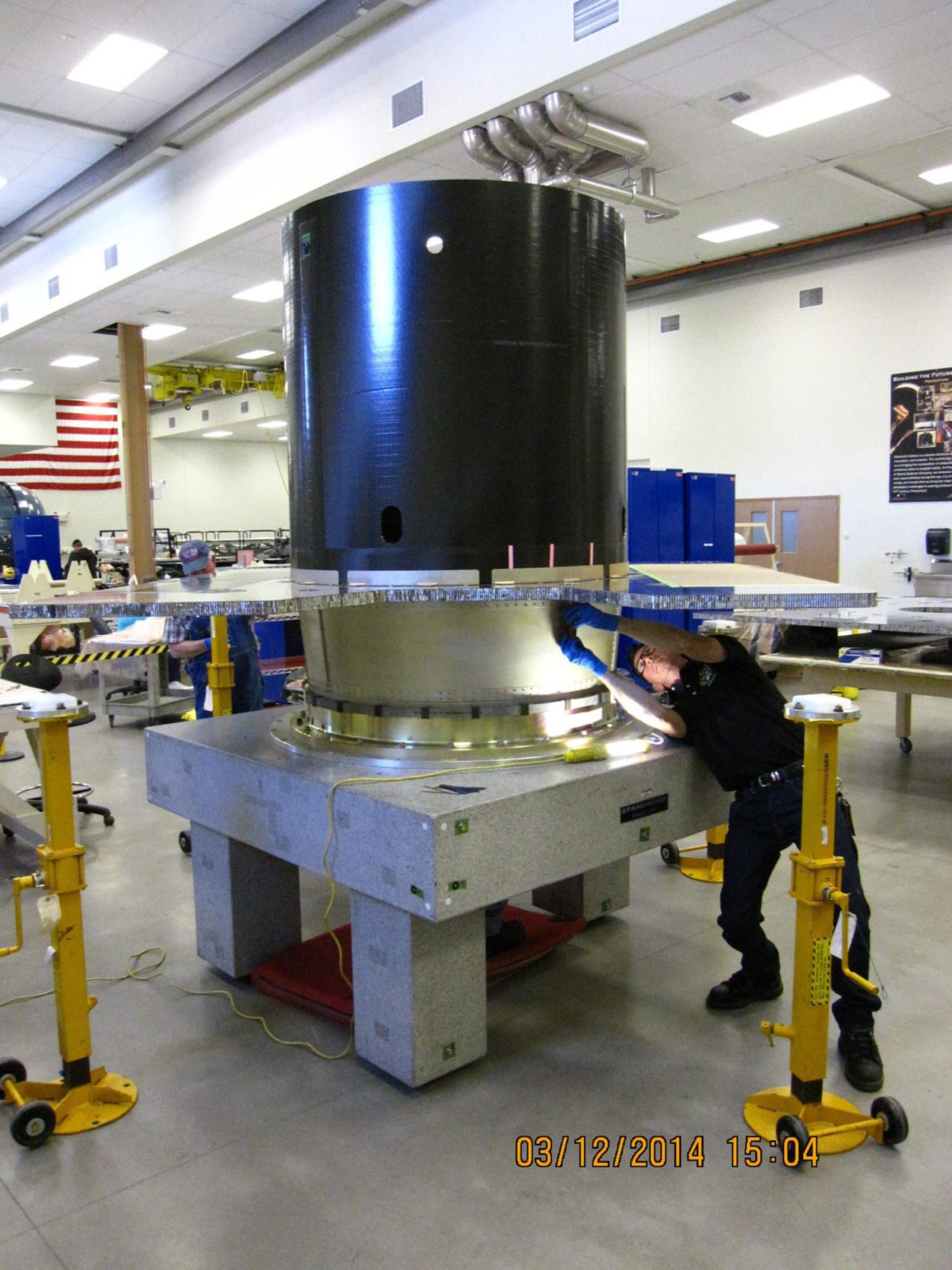Dante Lauretta • Jun 05, 2014
The construction of OSIRIS-REx has begun!
This article was originally posted on Dante Lauretta's blog and is reposted here with permission.
Last month, I had the opportunity to visit the spacecraft composite fabrication lab at Lockheed Martin’s Space Systems Company facility near Denver. The construction of OSIRIS-REx has begun!

The first flight components include the spacecraft structural parts – basically the skeleton of our spacecraft upon which all other components will be mounted. Spacecraft structures have to satisfy a lot of competing requirements. They have to perform over a wide range of temperatures, requiring very low thermal expansion of materials. In addition, they have to remain stable even when exposed to high doses of radiation. Another requirement is stiffness – measured as the natural frequency of a structure (like ringing a bell). These natural frequencies have to be low enough to prevent breakup during launch. Finally, the material needs to be lightweight, to minimize the amount of rocket fuel required to launch them into space, yet provide enough strength to support the rest of the flight system. Seeing the core structure being assembled demonstrated that OSIRIS-REx is no longer just a set of drawings and PowerPoint charts, it is starting to become a real spacecraft.

OSIRIS-REx is Lockheed Martin’s sixth generation composite interplanetary spacecraft. This design builds on many successful planetary missions including the Mars Reconnaissance Orbiter, the Juno Jupiter orbiter, and the recently launched MAVEN mission to Mars. The OSIRIS-REx structure is built out of composite panels comprised of aluminum honeycomb sandwiched between graphite composite face sheets. This material is low density, has high strength, and is stable against degradation in the space environment. The composite sandwich panels provide stiffness and low mass, with doublers used as required to provide additional facesheet strength or thermal conductivity. When fully assembled, the entire structure will only weigh 160 kilograms (~350 pounds).

Two decks, the forward deck and the aft deck, are mounted on the top and bottom of the core cylinder, respectively. The upper side of the forward deck supports the Sample Acquisition and Return Assembly (SARA) panel, which hosts the sample-return capsule, its separation/spin mechanism, and the TAGSAM. We also mount the science instruments, the guidance, navigation, and control (GN&C) LIDARs, and one of the low-gain antennas (LGA) on top of the forward deck. Mounted to the aft side of the forward deck are the inertial measurement units, GN&C LIDAR electronics, and star trackers.

The aft deck supports the batteries, electronics, another LGA, a medium gain antenna, the reaction wheels, and solar array gimbals. Four gusset panels connect the forward and aft decks and provide additional support. Loads from the forward deck are reacted by the central cylinder and gusset panels on the diagonals. The gusset panels support telecom components, propulsion isolation and control components, and the helium pressure tank. The forward and aft decks and two of the gusset panels combine to support the 2-meter high gain antenna.

The structure is sized for the Atlas V launch environment. Despite the primary structure’s light weight, it is designed to support the entire spacecraft mass during the launch, which applies an equivalent axial force at the launch vehicle interface of approximately 61,000 pounds. This large force is the result of accelerating the spacecraft up to 6 “Gs”, or six times the acceleration due to gravity at the surface of the Earth. At the center of the structure is the 1.3-meter-diameter core cylinder that encloses the hydrazine propellant tank and serves as the primary vertical load-bearing structure. The large tank will hold approximately 1700 kilograms of fuel. The composite structure and fuel tank attach to an aluminum field joint ring. The field joint ring is the forward segment of the boat tail assembly, which supports the main engine assembly and attaches the spacecraft to the launch vehicle.

I want to thank the spacecraft structures team for all their hard work getting us to this point. Denise Kato is responsible for the configuration of the spacecraft (where everything goes), and the lead for structures. Keith Golding and Sean Ley produced most of the panel drawings for the composites lab. Nimesh Dave updated the MAVEN boat-tail drawings for OSIRIS-REx use, and he is the one who makes daily visits to the shops to ensure progress. So he deserves most of the credit for getting the structure completed. Derek Shannon, Lowell Cogburn, and Blake Russon are our stress and dynamics analysts who ensure the design will work. Chris May (thermal lead) and his thermal inputs were integral to our structure design; and Chris Manspeaker (ground support equipment designer) made sure we are able to lift, process, and transport the spacecraft throughout ATLO. The Composites and Prototype Development Shops (CDS/PDS) staff and technicians manufacture and assemble the flight hardware for us. The designers just have pretty pictures until they turn it into real hardware. Great job team!
I just heard today that all the fasteners are torqued to the proper values and thus the spacecraft core structure is now complete! Next week, the structure will be moved to Lockheed Martin’s Structures Test Lab and undergo static load testing, which simulates and tests the many dynamic loads the spacecraft will experience during launch. After completion of the static tests, the structure will be moved into a clean room to start propulsion subsystem integration. Stay tuned for more posts as the OSIRIS-REx spacecraft comes together and we prepare to launch towards Bennu in 2016.
Support our core enterprises
Your support powers our mission to explore worlds, find life, and defend Earth. You make all the difference when you make a gift. Give today!
Donate

 Explore Worlds
Explore Worlds Find Life
Find Life Defend Earth
Defend Earth

